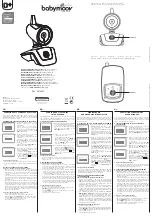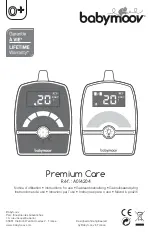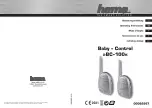
Section 1 —Introduction
Page 1-6
VitalCare
TM
506N3 Series Service Manual
Criticare Systems, Inc.
Method
The digital pulse oximeter measures oxygen saturation and pulse rate
using the principles of spectrophotometry and plethysmography. The
sensor is completely non-invasive, and there is no heat source that
could burn the patient.
The pulse oximeter sensor contains two types of LEDs; each type
emits a specific wavelength of light. Since oxygenated hemoglobin
and deoxygenated hemoglobin absorb light selectively and
predictably, the amounts of these two compounds can be determined
by measuring the intensity of each wavelength that passes through
the measuring site.
The light from the LEDs shines into a pulsating vascular bed. A
photodetector located opposite or alongside the LEDs measures the
intensity of each wavelength transmitted through the monitoring site.
The light intensity is converted to an electrical signal, which is input to
the monitor. The effects of skin pigmentation, venous blood, and
other tissue constituents are eliminated by separating out the
pulsating absorption data.
SpO
2
is calculated with every pulse and averaged with the results
from previous pulses to arrive at the current numeric display value.
The display is updated at least once per second with the numeric
values that were calculated during the intervening period.
The plethysmographic pulse bar is not auto-gained. The amplitude
display of the plethysmographic pulse bar is proportional to the pulse
volume changes occurring in the tissue illuminated by the SpO
2
sensor.
SpO
2
Clinical Testing
and Accuracy
All Criticare Systems, Inc., oximeters have SpO
2
calibration tables
which were originally generated by monitoring desaturated human
patients or volunteers and matching their displayed SpO
2
value to the
value determined by sampling arterial blood and measuring
functional SaO
2
with a clinical laboratory grade multi wavelength
optical oximeter (i.e. CO-oximeter). The final SpO
2
calibration curve
was then generated based upon numerous patients' data over the
range of 40 to 99% SaO
2
. All accepted data were taken from patients
with dyshemoglobin (i.e., carboxyhemoglobin, methemoglobin)
concentrations near zero.
This oximeter is a two-wavelength device, which is calibrated to
measure functional SpO
2
only when dyshemoglobin concentrations
are near zero. The accuracy specifications of this device will not be
met with high concentrations of dyshemoglobins. Significant
concentrations of carboxyhemoglobin results in a higher displayed
SpO
2
value than is actually present in the patient.
Summary of Contents for 506DN3
Page 12: ......
Page 56: ......
Page 62: ......
Page 90: ......
Page 156: ......
Page 184: ......
Page 225: ......
Page 229: ......
Page 230: ......
Page 231: ......
Page 232: ......
Page 233: ......
Page 237: ......
Page 238: ......
Page 239: ......
Page 240: ......
Page 241: ......
Page 242: ......
Page 243: ......
Page 244: ......
Page 245: ......
Page 247: ......
Page 248: ......
Page 249: ......
Page 250: ......
Page 251: ...DO NOT SCALE PRINT DO NOT SCALE PRINT REV DATE DESCRIPTION BY...
Page 253: ......
Page 254: ......
















































